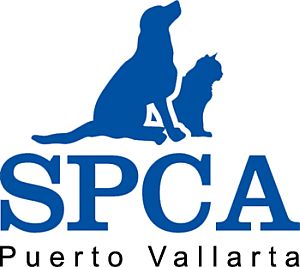Puerto Vallarta, Mexico - The debate has raged on in the scientific community for years about whether animals, especially dogs and cats, have real emotion. There are still scientists who would like to believe animals do not have emotions because it is easier to use them in research. In the past, most studies were done post-death to see if they could test brains of dogs, particularly to see if they feel. That yielded little usable results.
Gregory Burns, a professor of Neuroeconomics at Emory University in Atlanta Georgia, says that dogs use the same area of the brain as humans do to feel and that dogs have emotions just like people including, joy, love, excitement, fear, loneliness, sadness etc.
Burns' research is the result of 2 years of MRI scans on dogs who were not sedated but trained to sit perfectly still in the machine. The results show that dogs use the caudate nucleus part of the brain to respond to humans they know. Burns says this shows that dogs have a level of sentience of feeling and understanding comparable to that of a human child. This does not come as a surprise to dog and cat owners who observe feelings in their own pets.
 |
Now science knows that Evolutionary biology, cognitive Ethology (study of animal minds) and social neuroscience support the view that numerous and diverse animals have rich and deep emotional lives.
Why is this important to our community of Puerto Vallarta? Because we have a large population of homeless and abandoned dogs and cats that cannot take care of themselves and we, as compassionate people, have a duty to help the suffering. Our ability to help is what makes us human. Would you walk past a small injured or abandoned child?
The situation here in Puerto Vallarta has improved over the last 20 years but still so much needs to be done. Homeless animals are everybody's business. We as a community are only as strong as we treat and take care of our most vulnerable members, the poor, the children, elderly and animals. Yes, and animals.
I see so many more Mexican families with pets on leashes being loved and cherished but I also see dogs being kicked, having rocks thrown at them, and left to die by car or illness with little thought to the immense suffering and fear and loneliness. Awareness is increasing but the suffering continues.
Recently I was on a visit to the SPCA de PV sanctuary with a friend. A beautiful, young, shiny-coated dog named 'Shiloh' was on the lap of a volunteer, who was stroking her gently and talking to her in soothing tones.
Shiloh, barely conscious, had been brought to the sanctuary in a wheelbarrow. She had been left on a rooftop to bake in the sun until it literally fried her brain. Despite all efforts to save her, Shiloh had to be put to sleep. At least she died with someone's arms wrapped around her instead of alone. It still makes me tear up to remember that sweet dog and needless death.
Please, next time you see a homeless animal, stop and look at their pleading eyes and eager expression and HELP. The SPCA de PV and many other organizations work tirelessly to find homes for our abandoned and abused animals with success, but it takes money, time, veterinary care, spay and neuter clinics and, above all, LOVE.
Here is useful info to keep in your phone:
Instituto de Proteccion Animal: (322) 293-3690 (A new police unit in Puerto Vallarta)
Dial 066 if you have a 'pet attack' emergency.
You can email these groups as well, and they respond quickly.
info(at)friendsofpvanimals.com
clare23leach(at)gmail.com - for the business community to support the SPCA de PV.
Have a Heart. Save a Life. Together We Can Make a Difference.
Get involved... rescue, adopt, foster, volunteer, donate or educate. Contact us at spcapv(at)gmail.com. You can learn more about the SPCA Puerto Vallarta by checking us out at spcapv.com, or on Facebook.
 |



